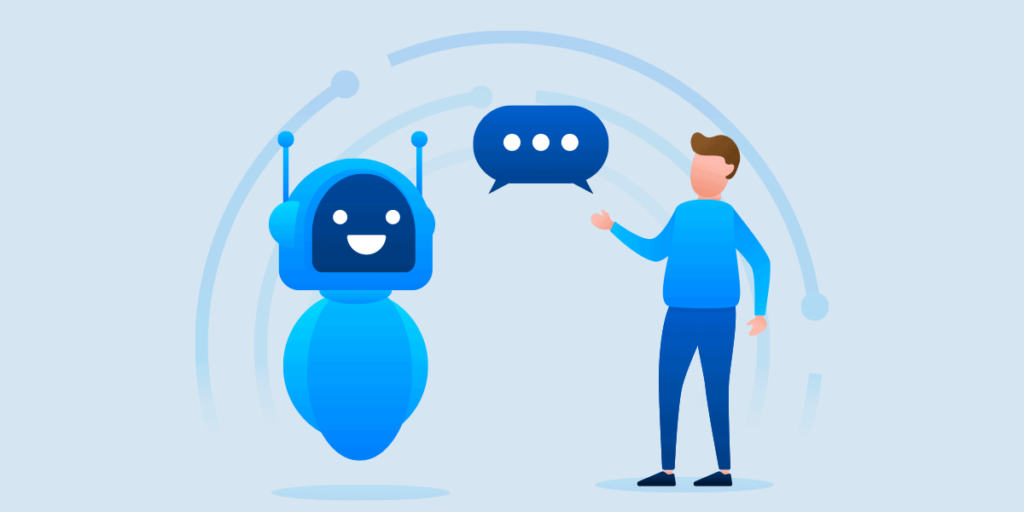Have you noticed how chatbots are improving? I have. However, there are still many that annoy, especially those that try to hide the fact that they’re not a human. But there’s a clear improvement, although you still need to enter text using a keyboard and not speak your need, as you might already be in the habit of doing with a smart device such as Amazon’s Echo or Google Home. But many chatbots have settled into a pattern. A common design. A conversational design. Hopefully, it won’t be long before the keyboard entry goes the way of the buggy whip and is replaced by an Alexa-style capability. But until then, there are several design principles I’ve noticed in chatbots that excel, and I’ve used these to create a kind of “chatbot manifesto” for anyone interested in the “secret sauce” behind chatbot success. This applies to IT service management (ITSM) and the many other internal and external use cases.
This article by @rookiekumar provides a list of 20 things to do and don't do when it comes to using #chatbots in your organization #AI Click To TweetMy chatbot manifesto
My chatbot manifesto is simply intended to be helpful to others and is presented in the form of 20 “dos” and “don’ts” and begins with a simple first rule.
- Do pick a specific scenario or scenarios for chatbot use that passes a most basic test, that:
- The visitor or consumer aspects are well known
- You have a documented response, or at least there is someone who has expert knowledge of the response and can help you document the response
- The response is standardized. By this I mean the response is the same every time the scenario occurs. If there are conditional branches, these are identified and matched to responses, or exit points.
- Do seek out other chatbot conversations that you feel have worked for you and represent “what good looks like,” and that you can reference during design sessions.
- Do involve the key visitor and response subject matter experts as key participants at the outset.
- Don’t start coding before scripting the conversation. Act out the visitor and chatbot roles. Preferably, involve representatives from the visitor community to act out their role.
- Don’t try to fool the visitor they’re interacting with a live human agent when they’re not. This facade is undone in moments and can permanently damage the relationship. Admit who you are – a chatbot or a virtual assistant and give yourself a name and persona.
- Do always welcome the visitor and introduce yourself as a chatbot, making it clear you have limitations and that a live agent is always on hand. If one is not, make it clear what other options are available, such as email. For example: “Hey John. I’m the IT Digital Assistant. I can help you with any of the following items. I can also connect you with a live chat agent.”
- Do always make clear:
- What you can help with (the offer and scope) as a menu of clickable items and allow the visitor to return to this menu at any time. For example: “I can help you check a balance, transfer or send money, or report a lost or stolen debit or credit card.”
- What the trigger keywords are to immediately jump to another part of the conversation. The most common include “agent,” “bye,” and ”menu.” Trigger words can also invoke another chatbot. If space allows present some of the most important as part of your welcome message. Offering trigger words is designed to give the visitor the impression they are in control.
- What the rules might be for using the service. For example: “Please note that we may monitor or retain this chat.”
- Do always allow immediate transfer to a live agent if they’re available, at any time
- Don’t start with an open question (“How can I help you?”). This is likely the greatest mistake chatbots can make, and it’s almost impossible to design a conversation around an open question. Try it sometime using just a pen and paper.
- Do warn the visitor if you expect to ask several questions. But don’tlaunch into a series of seemingly never-ending questions. Tell them how many and break longer sets of questions up into short series. For example, “Thank you for that information. I need further information to help you and have three questions.”
- Do identify key decision points in your design where you may take a different path in the conversation or replay what the chatbot has heard and interpreted before branching. These points are termed “waypoints.”
- Do limit responses to short phrase or sentences to reduce the likelihood the visitor has to scroll to read. Remember, most chatbots operate in a limited size window.
- Do adopt a “micro” conversation design approach, where the welcome, menu, trigger word, and exit elements are common, but each conversation in response to a menu selection is self-contained. This allows you to:
- Reuse the chatbot backbone design for other chatbot uses, and provide a consistent interaction across chatbots
- Move or enter and exit specific conversations managed by one chatbot from another, or maintain all your conversations in a common library and call upon these from any chatbot.
- Don’t use slang! Unless they’re designed to recognize and support specific visitor and scenario needs. But do always think and design with an “outside-in” perspective, from the perspective of the visitor (the consumer). If their need is encased in some industry slang, or special verbiage, such as in healthcare, or perhaps a telecom provider serving a subscriber, then that’s fine.
- Do include common responses for visitor entries the chatbot does not recognize or understand, for example: “Sorry, I didn’t understand that. Please try and rephrase your question again.” Or if the chatbot is totally lost, “It doesn’t look like I have an answer for your question. Please try rephrasing or select the link to be transferred to a live agent.”
- Do ensure that any responses such as these are consistently used across any chatbot, or conversation.
- Do always end or exit with a simple thank you statement and offer a “happy or not” (thumbs up, thumbs down styled survey). But don’t force a survey response as no response to this type of binary question doesn’t imply that all is well.
- Do always offer to email a transcript of the conversation to the visitor if you’re able to (this might require they provide their email).
- Do perform a regular analysis of conversations, and especially those where a thumbs down survey response was received. Prioritize these above a thumbs up.
- Do favor “deterministic” conversations when starting out. These typically have inputs from the visitor that are easily matched to chatbot responses. Good examples include simple break-fix scenarios such as “internet issue” or question/answer scenarios such as “Where is the nearest store?”
The DNA of successful chatbots
In my experience, the most successful and usable chatbots have the following design elements:
- A welcome or opening that both greets the visitor and admits it’s a chatbot
- They offer, a statement of what the chatbot can or cannot help with, as well some of the key trigger words to give a visitor the feeling they are in control
- Logic to interpret, understand, replay, and confirm visitor input
- Trigger word responses that redirect the conversation, re-presenting the menu, branching to another conversation or chatbot, or exiting
- A special trigger word to transfer the conversation to a live agent, or another means of interaction other than the chatbot
- An exit, thank you, and binary survey.
I hope that you have found my chatbot manifesto helpful and that it helps you design or improve chatbots that may one day help me. What would you add to my chatbot manifesto? Please let me know in the comments.
Want more? Here are informative ITIL 4 service value system and ITIL 4 service value chain articles.
Rohitkumar Nair
As the Director of Segment Marketing at Freshworks, Rohit is responsible for designing the global campaign strategy and thought leadership programs to drive demand generation and accelerate revenue for Freshservice, Freshworks' ITSM solution offering.

